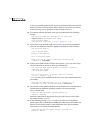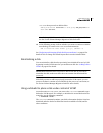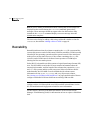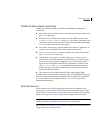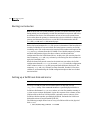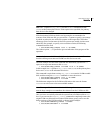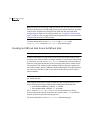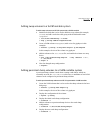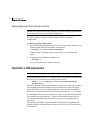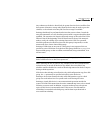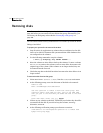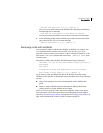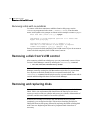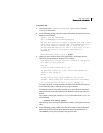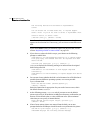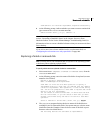
108 Administering disks
Dynamic LUN expansion
Removing a persistent dump volume
Caution: The system will not boot correctly if you delete a dump volume without
first removing it from the crash dump configuration.
Use this procedure to remove a dump volume from the crash dump
configuration.
To remove a persistent dump volume
1 Run the following command to remove a VxVM volume that is being used as
a dump volume from the crash dump configuration:
# crashconf -ds /dev/vx/dsk/bootdg/dumpvol
In this example, the dump volume is named dumpvol in the boot disk
group.
2 Display the new crash dump configuration:
# crashconf -v
You can now remove the volume if required.
Dynamic LUN expansion
Note: A license is required to use the dynamic LUN expansion feature.
The following form of the
vxdisk command can be used to make VxVM aware of
the new size of a virtual disk device that has been resized:
# vxdisk [-f] [-g diskgroup] resize {accessname|medianame} \
[length=value]
The device must have a SCSI interface that is presented by a smart switch, smart
array or RAID controller. Following a resize operation to increase the length
that is defined for a device, additional disk space on the device is available for
allocation. You can optionally specify the new size by using the
length attribute.
If a disk media name rather than a disk access name is specified, the disk group
must either be specified using the -g option or the default disk group will be
used. If the default disk group has not been set up, an error message will be
generated.
This facility is provided to support dynamic LUN expansion by updating disk
headers and other VxVM structures to match a new LUN size. It does not resize
the LUN itself.



